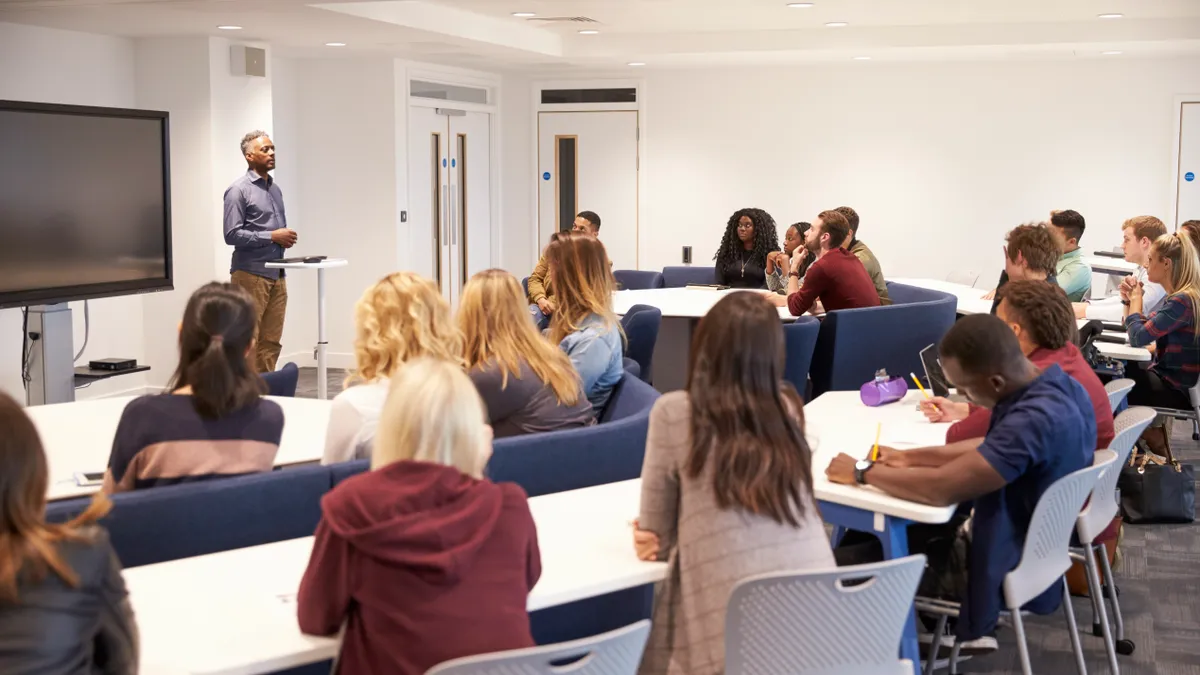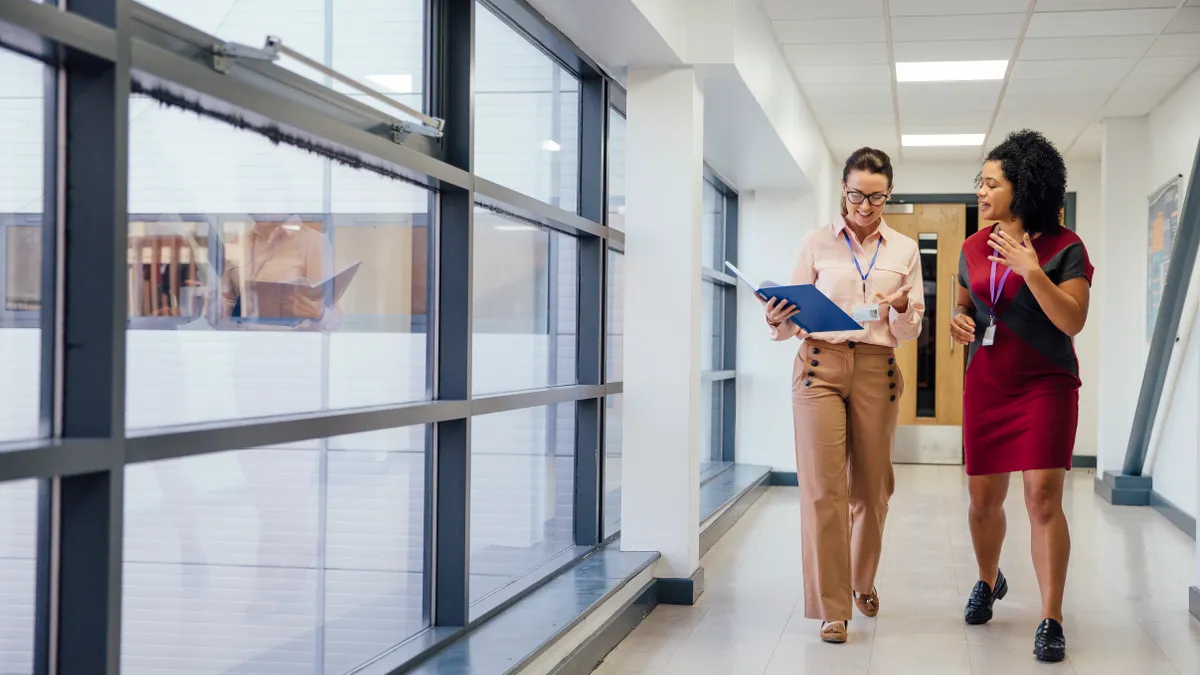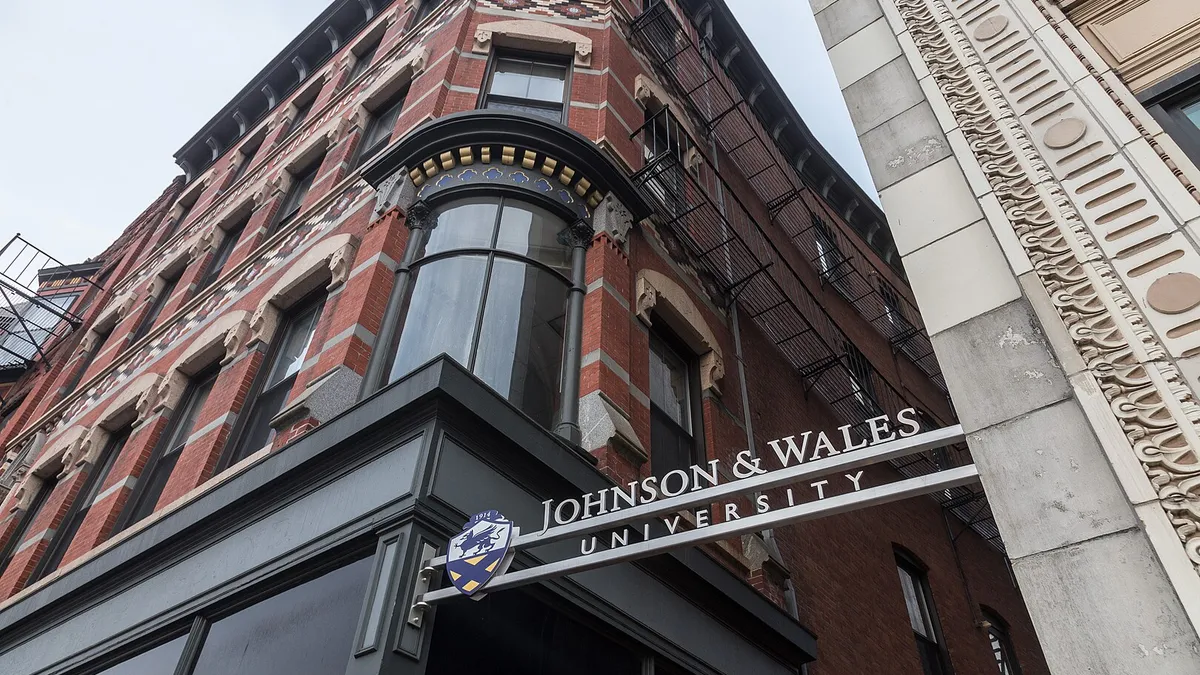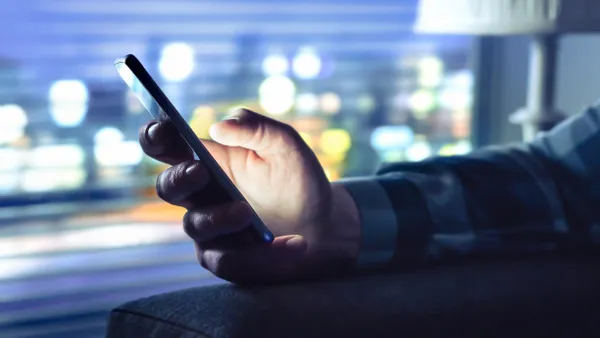Taking classes online has not been easy for many students at Coconino Community College during the COVID-19 pandemic.
The public two-year college in Flagstaff, Arizona, serves a sprawling 18,000-square-mile county that encompasses national forests, the Grand Canyon, and a large section of the Navajo Nation reservation. Its nearly 6,000 students live in some of the most remote areas of the country, many with no cell service to get online, and far away from campus, libraries and coffee shops to access free public Wi-Fi.
For many students, including those living in the sparsely populated Navajo Nation, the best solution is driving to the top of a hill to get enough cellular bars to download their coursework.
"The typical distance between houses (on the reservation) is somewhere in the neighborhood between a quarter-mile and a half-mile, often much more," said J. Nathaniel Southerland, Coconino's provost. "You can't provide community Wi-Fi when the houses are that spread out."
Coconino is one of many colleges throughout the country that has struggled to get students without internet access online after the coronavirus closed campuses. The problem could further heighten the nation's higher education class divide and force students to drop out or not enroll in college. Experts and college leaders say federal funding and college-driven initiatives have merely scraped the surface of what is needed to address the issue.
"The use of technology in education has become a necessity but access to it has fallen short," said Marshall Anthony Jr., a senior policy analyst at think tank the Center for American Progress.
'Band-Aids' on a bigger issue
The advocacy group BroadbandNow estimates that 42 million Americans do not have access to reliable broadband, the mechanism that delivers high-speed internet, such as through Wi-Fi. The issue is worse in rural areas.
A recent survey of more than 1,400 college students by the think tanks New America and Third Way found the problem was considerable among that group: 57% reported accessing high-speed internet was a challenge.
Many colleges used the money they received from the $14 billion in federal coronavirus relief earmarked for the sector in March to help students transition to online learning, such as by providing Wi-Fi hotspots. However, colleges had some discretion on how they would use the funds, and there were a lot of competing needs, Anthony said.
Institutions in some states also received funds from a separate $3 billion pot of relief money, called the Governor's Emergency Education Relief (GEER) fund. Governors were given discretion on whether those funds should be distributed to K-12 schools, colleges or both.
But only 16 states that opted to distribute the GEER funds to colleges and universities indicated they would invest in technology hardware or internet access specifically, Anthony said.
Oregon, for example, indicated it would distribute some of its GEER funds to provide internet access and technology for remote learning to historically underserved and economically disadvantaged students. Likewise, Nevada opted to use funds to "increase connectivity to combat the digital divide" in rural and urban areas, according to the state's application for the money. Iowa indicated it would use some of its funds to expand broadband access for students.

Coconino's challenges may be more severe than most colleges, considering some students living on tribal land are subject to reservationwide lockdowns, meaning they are unable to leave their homes to find cell service or Wi-Fi. The college decided not to purchase any wireless hotspots with the more than $1 million it received in coronavirus relief funds because most of its students who struggle to get online don't have cell service where they live, Southerland said.
Instead, Coconino asked instructors to work with students to ensure they can complete courses and make their lectures and materials available for download so students can access them whenever they are able to find cellular bars. As for a long-term fix, all they can do is hope and wait for some kind of technical solution.
Still, across the country students are traveling to nearby fast-food restaurant parking lots in order to access the internet, and colleges continue to dig into their coffers to get students online during the pandemic, think tank experts and college leaders say.
The federal relief aid is "clearly Band-Aids on the much bigger digital divide issues facing the nation as a whole, especially when it comes to broadband access," said Jarret Cummings, senior advisor of policy and government relations for ed tech advocacy group Educause.
'A necessary resource'
Washington State University administrators are contemplating how they will pay for another semester of Wi-Fi coverage for more than 900 students that received hotspots after classes moved online earlier this year because of COVID-19, said Craig Parks, the institution's vice provost for system innovation and policy. The university previously relied on federal coronavirus relief funds to pay for it.
To reach students in parts of the state where the satellite coverage needed to connect to the internet is unavailable, the university partnered with the state of Washington to provide free drive-up Wi-Fi access outside more than 600 buildings and other areas. That includes campus parking lots, the university's tribal and county extension offices, public libraries and community centers.
The initiative has helped so far, but Parks fears students will not want to drive to access Wi-Fi during the harsh winter months and sit in a cold car for hours.
The solutions can be far from perfect, but many college leaders have taken it upon themselves to expand internet access in rural communities.
Some colleges have worked with telecommunication companies such as Comcast to get their students low-cost broadband or other internet services, said Emily Bouck West, deputy executive director of Higher Learning Advocates, a bipartisan higher ed policy group.
Many colleges have also allowed students from rural areas without reliable high-speed internet to live on campus during the pandemic, said Richard Ekman, president of the Council of Independent Colleges.
Even before the pandemic, many universities pushed for better connectivity in their regions by spreading awareness about the benefits of broadband and helping cities, schools, libraries, businesses and other entities access and use internet services effectively, a 2019 Association of Public and Land-grant Universities report found.
Since the pandemic began, many land-grant universities have also kept broadband networks open at their county extension offices so people can get online in their parking lots, said Sheila Martin, vice president for economic development and community engagement at APLU.
However, more comprehensive change is going to require the backing of federal lawmakers, according to West. Congress, she said, needs to pass legislation expanding broadband access to more rural areas. A proposed Senate bill that provides discounted broadband services to laid-off workers and low-income students and families could also help bridge the divide through the pandemic.
"We're to the point where broadband approaches electricity as a necessary resource. For higher ed, we can't educate people if we can't interact with them."

Craig Parks
Washington State University, vice provost for system innovation and policy
Coconino Community College has been in discussions with Arizona's Commerce Authority in working with the state to expand broadband infrastructure, said Southerland, its provost. A continued build-out of fiber networks in rural population centers and a permanent expansion of the federal E-Rate program — which provides affordable high-capacity broadband to public schools and libraries — to also service businesses and colleges, could help as well, he added.
However, Educause's Cummings said that while broadband access advocates have discussed such an expansion in the past, no formal proposals have gained traction. That's because such an idea would require a politically-divisive Congressional restructuring of the program's text and a large permanent infusion of cash so funding for schools and libraries is not negatively affected.
But even a massive nationwide investment in broadband expansion may not help some of Coconino's most remote students, Southerland said. The cost of bringing broadband to each home would be astronomical, he said, noting that a larger project is needed, such as Elon Musk's SpaceX's Starlink, which is expected to provide internet access via satellite. That is, of course, if the cost of such a service is affordable to end users.
"We're to the point where broadband approaches electricity as a necessary resource," Washington State's Parks said. "For higher ed, we can't educate people if we can't interact with them."



















